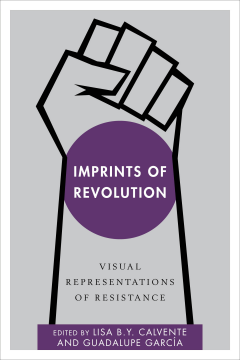
Additional Information
Book Details
Abstract
What is the significance of the visual representation of revolution? How is history articulated through public images? How can these images communicate new histories of struggle?
Imprints of Revolution highlights how revolutions and revolutionary moments are historically constructed and locally contextualized through the visual. It explores a range of spatial and temporal formations to illustrate how movements are articulated, reconstituted, and communicated. The collective work illustrates how the visual serves as both a mobilizing and demobilizing force in the wake of globalization. Radical performances, cultural artefacts, architectural and fashion design as well as social and print media are examples of the visual mediums analysed as alternative archives that propose new understandings of revolution. The volume illustrates how revolution remains significant in visually communicating and articulating social change with the ability to transform our contemporary understanding of local, national, and transnational spaces and processes.
This is a fascinating collection of empirical case studies which should be useable in a wide range of educational contexts and will not go out of date quickly.
Laurence Cox, Lecturer in Sociology, National University of Ireland Maynooth
Calvente and Garcia offer a much needed theoretical and methodological contribution to Cultural Studies by bringing together scholars who reinvigorate the study of visual communication with careful and rigorous case studies. The essays in this text demonstrate the power of visual images to not only perform and enact history, but incite and inspire revolution, a necessary precursor to decolonialism.
Bernadette Marie Calafell, Full Professor of Communication Studies, University of Denver
| Lisa B. Y. Calvente is Assistant Professor of Intercultural Communication and Performance Studies in the College of Communication at DePaul University. Guadalupe García is Assistant Professor of History at Tulane University. |
Table of Contents
| Section Title | Page | Action | Price |
|---|---|---|---|
| Contents | v | ||
| Introduction. Decolonizing Revolution through Visual Articulations | 1 | ||
| Chapter 1. Icons of Revolution: Constructions of Emiliano Zapata in Prints of the Mexican Revolution | 21 | ||
| Chapter 2. Imprinting Industriousness in the Quest for the Good Life: Lineages of the Chinese Revolutionary Image from 1949 to the Present | 43 | ||
| Chapter 3. Image in Revolution: Articulating the Visual Arts and Becoming Cuban | 65 | ||
| Chapter 4. The Image of Difference: Racial Coalition and Social Collapse by Way of Vietnam | 87 | ||
| Chapter 5. Ethiopia Tiqdem? The Influence of the Mythic, Protest, and Red Terror Periods on Ethiopian Pan-Africanism | 117 | ||
| Chapter 6. Incas for Sale: Commodified Images of Historical Sites | 151 | ||
| Chapter 7. Hugo Chávez, Iconic Associationism, and the Bolívarian Revolution | 171 | ||
| Chapter 8. Crisis and Revolution: Activist Art in Neoliberal Buenos Aires | 199 | ||
| Chapter 9. Mexican Spring: | 223 | ||
| Bibliography | 259 | ||
| Further Reading | 281 | ||
| Index | 283 | ||
| About the Contributors | 293 |
